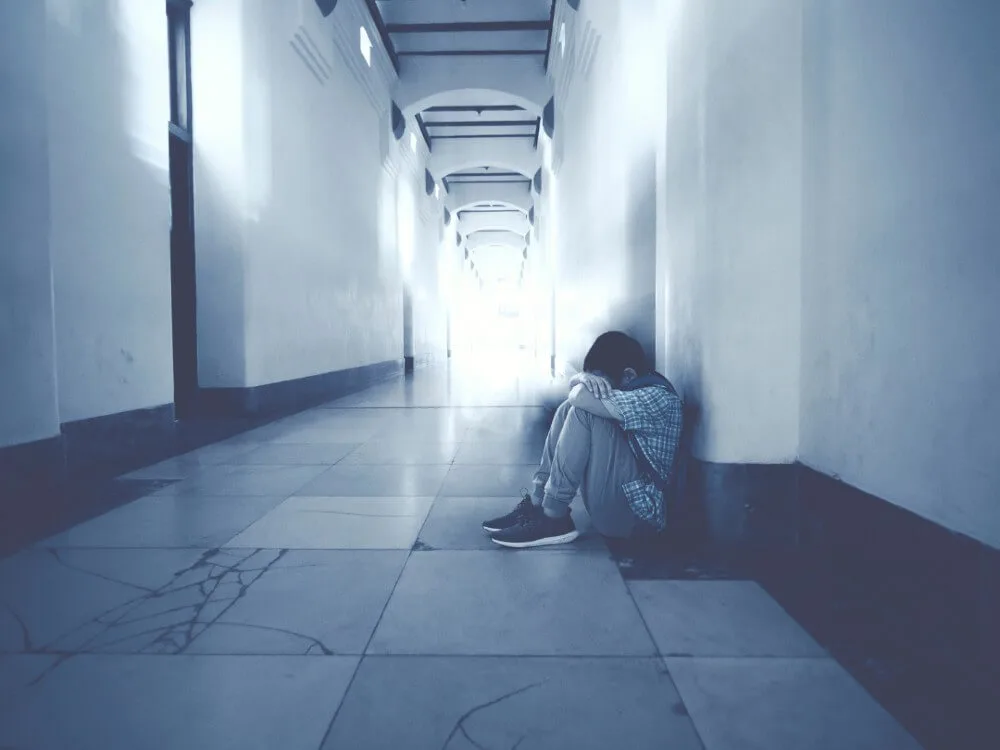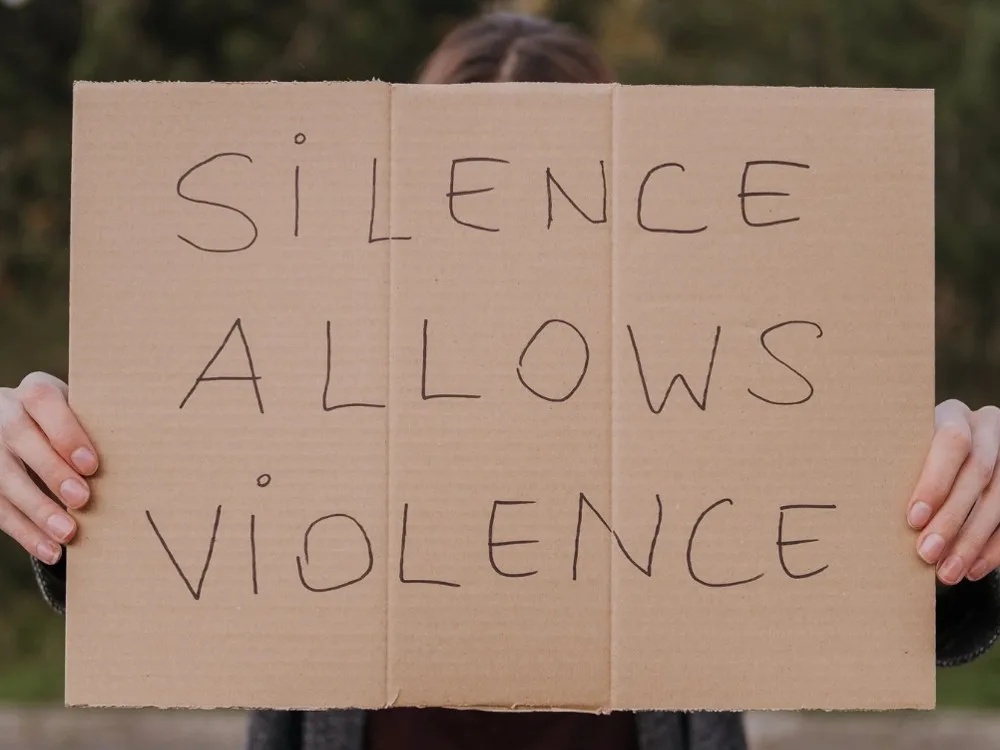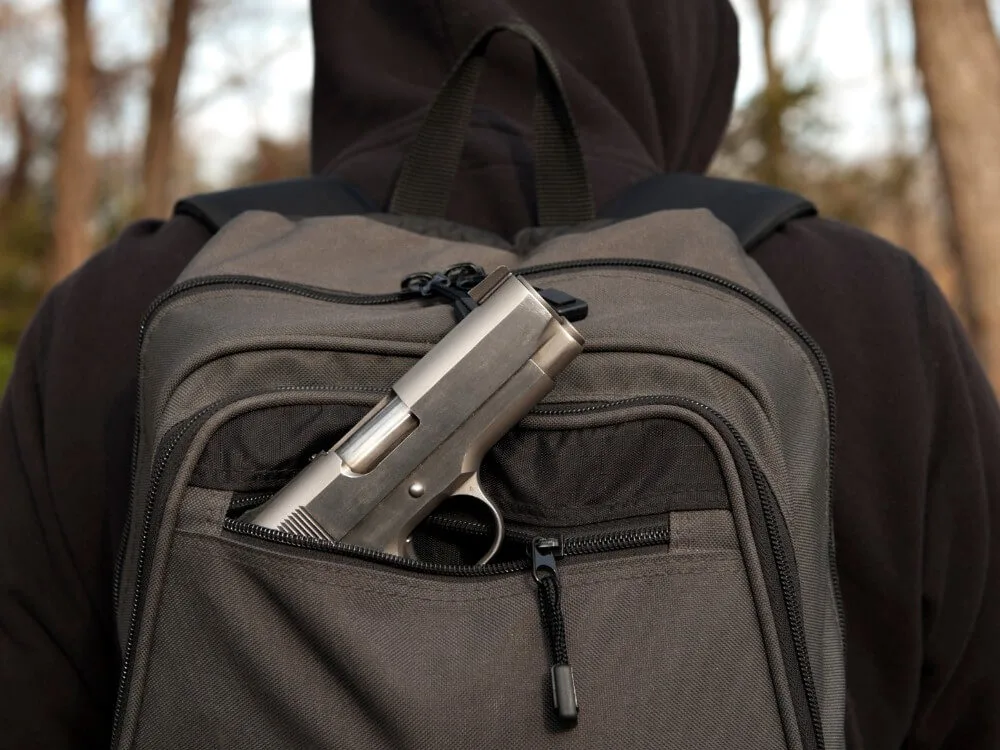According to multiple studies on the prevention of school shootings, these tragedies can be prevented by identifying warning signs of violent intentions beforehand. Students’ intentions are typically “leaked” through talking with peers, school assignments, online behavior, and/or interactions with parents.
Oftentimes, teachers are the first to see concerning behavior from at-risk students in the classroom. However, schools can’t be expected to monitor what a student does at home or online. What the school can do, however, is listen and act when they receive warning signs from teachers and other school staff.
Warning Signs of School Shootings
Research shows that homicidal teens rarely keep quiet about their murderous plans. In almost every major school shooting in the U.S. and Canada, there were very clear warning signs and blatant evidence of what was to come.
One of the most important “leakages” or warning signs of potential for violence is seen in school assignments. Most notably these warning signs are seen in both fictional and non-fictional writing. Teachers often bring concerns about a student’s writing to the administration, but it is generally downplayed or ignored.
English teacher Sarah Lerner, who survived the mass shooting at Marjory Stoneman Douglas High School in 2018, writes, “We see something odd in the classroom or around school, we hear something troubling, we read something serious, we follow directives and protocols. We report it. Sometimes it’s taken seriously and acted upon. Often, school administrators tell us that nothing can be done until the student breaks a rule or school board policy. Our warnings may end up in a file somewhere until the threat becomes reality. Teachers try to do the right thing, and raise concerns to the officials who are supposed to act. But at the same time, teachers are left with the horrifying reality that they can do only so much as a line of defense to protect their students.” Lerner’s words capture the helplessness that teachers all over the country feel on a consistent basis.
Before the following notorious school shootings, if the administration had taken the pleas and fears of teachers seriously, it might have prevented a mass tragedy. However, instead, they usually skirt their responsibility or even defer it, threatening punitive action if students “fail” to report a threat.
The 4 School Shootings That Could Have Been Prevented
In an educational industry more concerned with improving learning data metrics and shirking accountability than actually advocating for the needs of their students, the sad truth is that there is A LOT that could be done to prevent school shootings.
Gun control? Noooooo, don’t be silly. That only works in every other OECD nation!
However, even by simply listening, staying vigilant to the warning signs, and listening to teachers’ concerns, gun massacres CAN be prevented.
To demonstrate my point, here are four of the most famous school shootings in American history and the warning signs that were ignored.
Eric Harris and Dylan Klebold (Columbine High School)
The 1999 Columbine High School massacre that killed 12 and wounded 24 was the first of its kind in the USA. Eric Harris and Dylan Kelbold exhibited clear warning signs of their potential for violent behavior.

These are just a few concerning behaviors reported by teachers prior to the shooting:
- Harris and Klebold created a film for their video production class called, “The Trench Coat Mafia: Hitmen for Hire.” The video portrayed them as hitmen who come to school and kill all the bullies. This was one of many “dark and violent videos” created by the pair and the entire class found them disturbing.
- In Creative Writing class, the teacher was so disturbed by a violent story Klebold wrote about a killing spree at school that she insisted on a conference with his parents.
- Another teacher reported to the administration that both Harris and Klebold had written “hate stories and hate letters and might have a potential for violence.”
- Earlier that year, Harris wrote a paper on school shootings. He also completed research papers on Charles Manson and the Nazis.
- Harris wrote a creative essay about dreams of killing people and penned a “poem from the perspective of a bullet.”
In all cases, these signs were either ignored or teachers were bullied by the administration for their efforts.
Seung Hui Cho (Virginia Tech)
On April 16, 2007, Seung Hui Cho, an angry and disturbed student, killed 32 students and faculty at Virginia Tech. He wounded 17 others, and then killed himself. The Virginia Tech shooting was one of the deadliest shootings to date.
Cho had a long history of mental health problems that started in early childhood. His main issues were depression and selective mutism, both symptoms of a larger, severe social anxiety disorder.
Cho received a lot of services and interventions during middle and high school but when he went to college there was “a lot of confusion about state and federal privacy laws and gaps in mental health services.” Basically, troubling incidents with Cho were reported to the counseling center, campus police, the dean of students, and the office of judicial affairs, but none of these were shared with each other due to fears about privacy laws.
In reality, if these incidents were all placed into one system, the indication of a serious mental issue that needed immediate intervention would have been obvious.
One of the clearest warnings came from Cho’s Creative Writing professor along with the chair of the English Department, Lucinda Roy. Cho’s professor alerted her supervisor that Cho’s poems were disturbingly angry and violent. Roy reached out to Cho and became alarmed herself.
“I’ve been teaching for 22 years, and there’ve only been a couple of times when I thought that this is a really, really worrying thing,” Roy commented. “And this was one of them.”
Cho’s professor and classmates were so uncomfortable around him that Roy felt she had no choice but to ask him to stop attending class. Rather, Roy agreed to tutor him herself.
She stated, “I was hoping that by taking him out of the classroom I’d help maybe to avoid something that could be catastrophic. I kept saying to him, ‘Please go to counseling; I will take you over to counseling myself,’ because he was so depressed, but apparently, I was told you can’t force someone to go to counseling.” Eventually, she contacted the police about his violent writings but because there were no direct verbal threats made to teachers or students, they said they couldn’t do anything.
Many others reported incidents to the Virginia Tech administration. These behaviors range from several accusations of stalking (which Cho blamed on his non-existent twin brother), and a collection of knives that were “so unsettling that his dorm director wrote to the college’s chief of dorm discipline asking that someone pay attention, but there’s no record that anyone did.”
Adam Lanza (Sandy Hook Elementary)
On December 12, 2012, 20-year-old Adam Lanza killed his mother, then drove to Sandy Hook Elementary School and killed 6 adults and 20 children. This all happened in eleven minutes, then he killed himself.
Lanza has a complicated history of social, emotional, and developmental concerns, and there were many warning signs of his potential for violence that were brought forward by numerous teachers and healthcare providers.
The first major red flag was in 5th grade when Lanza wrote a 52-page comic book filled with shockingly violent drawings and stories “of child murder and cannibalism.”
In seventh grade, while attending the St. Rose of Lima School, Lanza wrote essays about “battles, destruction, and war” that were so disturbing his teacher showed them to the school principal. The essays showed that Adam was “deeply troubled by feelings of rage, hate and (at least unconscious) murderous impulses,” according to the state Office of Child Advocate report. Lanza’s teacher at St. Rose told state investigators that the “level of violence was disturbing” and his “creative writing was so graphic that it could not be shared.”
Lanza’s mother took him out of school for a year of homeschooling after that, and no one followed up. With student behavior getting worse across the nation, the Sandy Hook shooting is a stalwart testament to the results of that complacent negligence.

Nikolas Cruz (Stoneman Douglas High School)
On February 14th, 2018, Nikolas Cruz opened fire on the campus of Marjory Stoneman Douglas High School in Parkland, Florida. He killed 17 students and faculty members.
The warning signs for Cruz started early in his life. At age 13, Cruz had received 26 disciplinary incidents in one year of middle school. He was suspended for fighting and then enrolled in a school for students with emotional and behavioral problems.
By 10th grade, Cruz enrolled at Stoneman Douglas High School. His behavior there was so concerning that he wasn’t allowed to enter the school with a backpack.
Cruz “told an administrator that shooting guns helped him relieve stress.” None of this information was shared with authorities who got to decide whether or not he needed psychiatric care. Yet when the school district judged whether he might harm other students, “he met all of the criteria for aggression and depression.”
According to Bob Gualtieri, chairman of the state-appointed Marjory Stoneman Douglas High School Public Safety Commission, “Those teacher comments are extremely relevant. There is stuff in them somebody doing an assessment should have been aware of.”
But the assistant principal who handled Cruz’s threat assessment – a strong contender for the title of the worst teacher ever – had never done one in his 31 years in education. According to the Public Safety Commission, the assistant principal “was not competent in handling the task.” If one merely looks at the comments written on Cruz’s threat assessment forms by teachers, it paints quite a clear picture.
Several teachers commented on official reports that he “made threats,” “was fascinated with guns,” and that they were afraid of him, including the following:
- One teacher said that “Cruz had been found with violent writings and showed a fascination with guns.”
- When asked if staff or students were afraid of him, another teacher literally wrote, “Me, yes!”
- U.S. Army Junior Reserve Officers’ Training Corps instructor Peter Mahmood wrote, “I am concerned with access to any weapons,” noting that Cruz “has been removed from marksmanship (rifle team).” When asked if staff were afraid of the student, Mahmood checked yes and wrote “Admin and Teacher.” Another teacher talked about how he wrote the word “kill” on one of his notebooks and talked about buying guns.
Ethan Crumbley (Oxford High School)
On November 30, 2021, 15-year-old Ethan Crumbley killed four students and wounded seven others, including a teacher, in a mass shooting at Oxford High School.
The day before the shootings, a teacher reported Ethan to the administration for searching for ammunition on his phone. The school reached out to his parents, but they never heard back.
On the morning of the shooting, another teacher was so disturbed by the drawings and writings Crumbley had produced, that she took a photo to show school authorities. On a piece of paper in front of Crumbley, the teacher saw the words “the thoughts won’t stop, help me,” a drawing of a bullet, and the phrase “blood everywhere.” He had drawn sketches of a person who was shot twice and bleeding, and a laughing emoji with the final lines, “my life is useless” and “the world is dead.”
The school called Crumbley’s parents in for a meeting. He had scribbled out many of the alarming writings before they showed them to his parents. The administration told the parents to send their son to counseling in the next 48 hours and take him home.
In keeping with the growing epidemic of parents blaming teachers and everyone else for their children’s behavioral issues, they refused to take him home and then left the school.
Instead of involving the school’s resource officer, or calling the police for help in escorting the student from the building, they let him return to class without even searching his backpack. That is when the shootings occurred. It would have been in the administration’s power only to prevent the student from returning to class, and not the teacher. But the concerns of the two teachers should have been enough.
When questioned about why Crumbley was allowed back to class, the superintendent said, “No discipline was warranted. There are no discipline records at the high school. Yes, this student did have contact with our front office, and yes, his parents were on campus on November 30. I will take any and all questions at a later time. But that’s not now.”
Preventing School Shootings: What Can Be Done
There are many steps that can be taken to help prevent school shootings. One primary step is listening to teachers when they bring concerns to the administration regarding students.
According to the Violence Project, “There are signs that school officials, counselors, and other adults can look for to identify students who may be hitting crisis points. You want a crisis response team who can quickly intervene and do an assessment. So part of this is really about building the systems and giving schools the resources that they need to adequately investigate these situations.”
The Washington Post reports that billions have been spent on armored school doors, bulletproof whiteboards, and other extreme security measures to try to keep kids safe during a shooting. None of it has worked.
Helping a Student in Crisis
To date, many measures to keep schools safe have not worked. What would work, and would probably cost a lot less, is the availability of immediate help for a student in crisis.
The Violence Project, an esteemed research organization dedicated to understanding this crisis, details harrowing statistics on school shootings in the USA. According to the research on school shootings, 77% of school shooters have had previous mental health concerns. And 87% showed signs of a crisis, as exhibited in their behavior, before the shooting.
The Stoneman Douglas Safety Commission recommends that schools seek out information from teachers about troubled students rather than waiting for reports of threats. When reported, threats of school violence should be taken seriously and seen as a plea for help. These threats are a critical moment for a student to be connected with long-term, high-quality resources. These resources include mental health treatment, social services, and substance use treatment.
But unfortunately, due to a lack of resources, the administration doesn’t tend to act on these warnings until they are given no choice, which happens after school shootings.
Buy Some Merch · Support the Site!
Teacher Misery is by the teachers and for the teachers. Our mission to improve the lives of teachers everywhere.
If you’d like to support the cause, buy yourself (or the burnt-out educator in your life) a gift from our merch store. And, YES, they are all as sarcastic as you’d hope. 😉
Every dollar supports the commiseration!

The Importance of Listening to Teachers: Finding a Systemic Solution
Teachers are often the first line of defense when it comes to reporting concerning behavior to the administration. They are the eyes and the ears of the classroom. If a teacher has a concern about a student, listen to them! Action following a teacher’s report could just help prevent the next school shooting.
Yet still, time and time again, our concerns and pleas for help are ignored. The teacher shortage crisis continues to snowball and very little is done to support those on the frontline.
But, of course, that doesn’t mean we should stop speaking out. School shooters aren’t necessarily monsters: they’re deeply mentally disturbed kids who have been neglected and pushed aside by a system that doesn’t care. They might pull the trigger…
But it’s the people that are meant to protect them that put the gun in their hands.


Jada
Sunday 30th of June 2024
In fourth or fifth grade, a boy I was friends with was being stalked by a girl. No one beleived him, too young they thought. I tried to tell the teachers, but all they said was to mind my own business. Then the friend brings a knife and gun to school with a list of ten people. But they were caught before they could do anything. I'm pissed at the teachers, cause it's not the only time those teachers were negligent to these things. They didn't care when my sister and I were followed part way on our walk home by bullies trying to talk shit. To be honest, it felt like they only ever cared when it came to punishing us for not knowing the difference between the middle finger and the pointer, taking I can't remember how long to even ask if I knew what I was doing. Oh, and the girl who stalked the boy? Ended up stalking another one of my friends in adulthood. Would straight up break into his house. Those bullies would taunt us, saying we were on this list, but we knew we weren't. Logically, we knew we would have been told if we were.
Steve
Sunday 12th of March 2023
In reference to the last sentence in the Sandy Hook bit: it's a bizarre, unfathomable fact that in the UK, parents can choose to simply take their child out of school to home educate with no formal requirement to engage with authorities, nor show how they are educating them. Local Authorities are able to intervene, but only if they have reason to suspect the child is not receiving an appropriate education. However, since the parents can choose to not engage with the Local Authority, there's little to no opportunity to make such a judgement. In a country where teachers and schools are highly regulated, inspected and judged, home education is completely unregulated.
P. Wilson
Wednesday 15th of February 2023
Thank you for this enlightening piece .